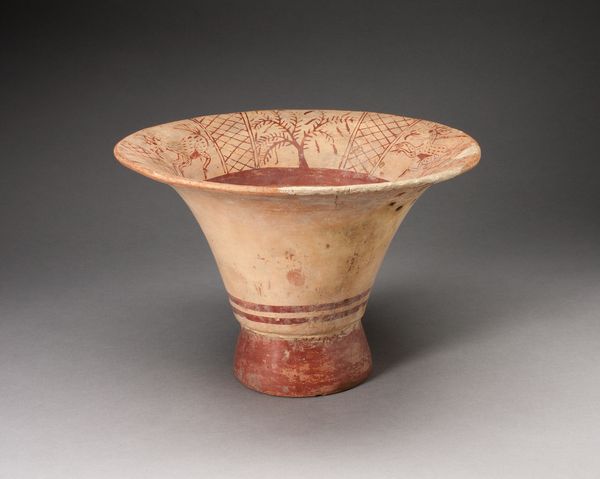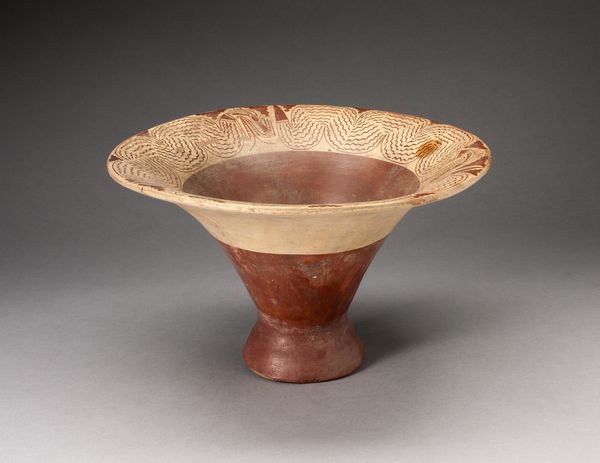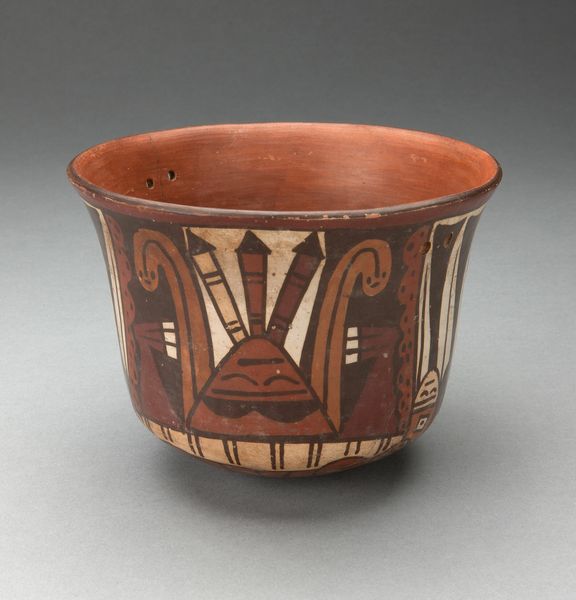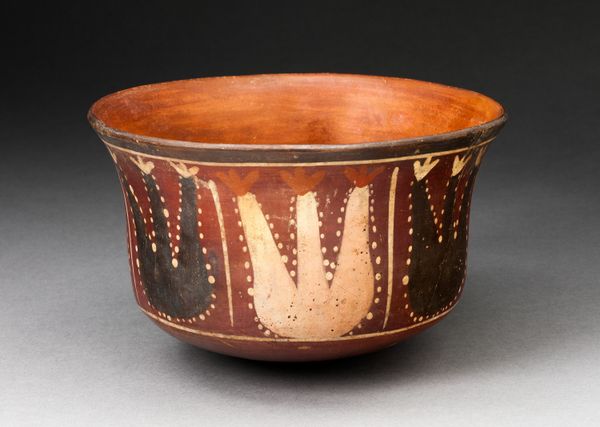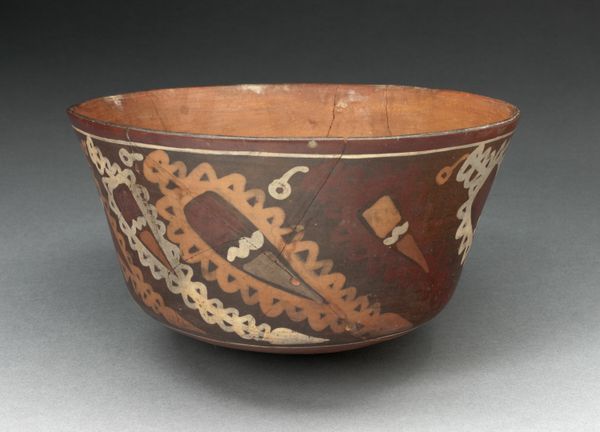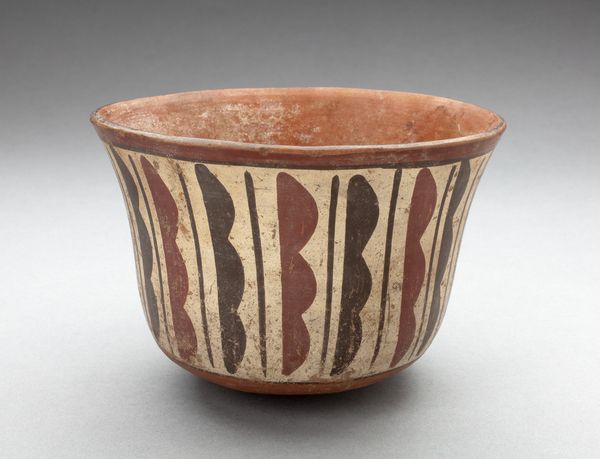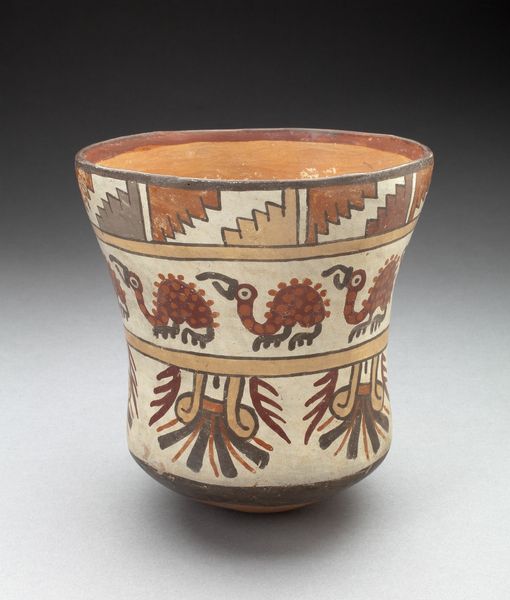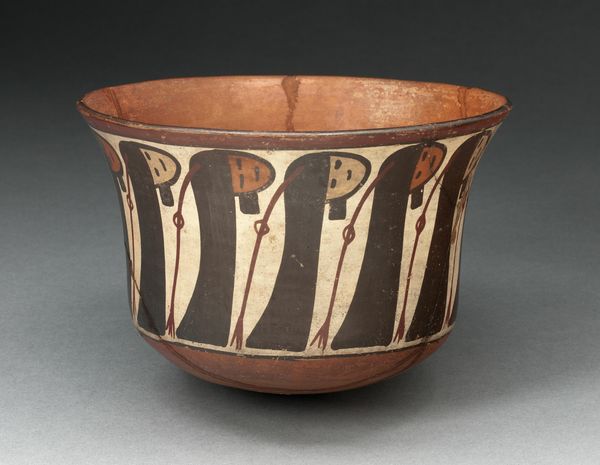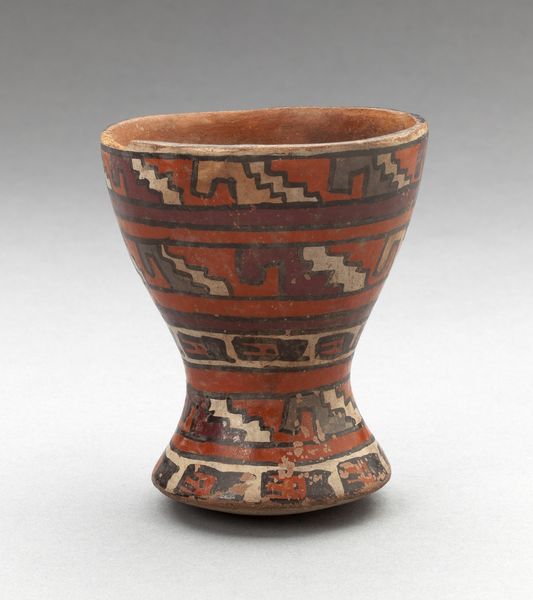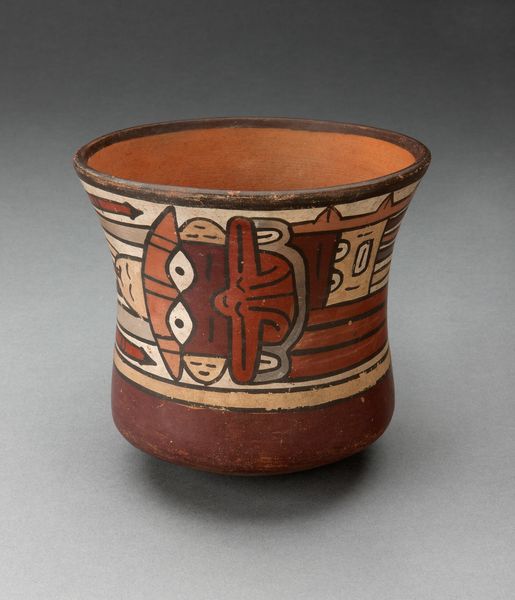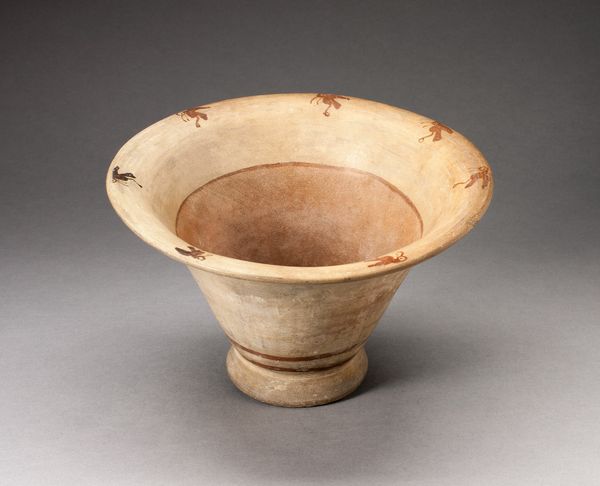
Flaring Bowl with Inner Rim Depicting Composite Feline, Serpent and Shell Being c. 100 - 500
0:00
0:00
ceramic, terracotta
#
ceramic
#
figuration
#
form
#
ceramic
#
terracotta
#
indigenous-americas
Dimensions: 23.2 × 35.9 cm (9 1/8 × 14 1/8 in.)
Copyright: Public Domain
Curator: My first thought seeing this ceramic flaring bowl is a ceremonial feeling; it looks like it belongs at the center of a ritual, perhaps even as the centerpiece in some grand opera staged in the earth. What do you sense when you first see it? Editor: I'm immediately struck by the imagery. This "Flaring Bowl with Inner Rim Depicting Composite Feline, Serpent and Shell Being" dated roughly to 100-500 CE, and attributed to the Moche culture is filled with hybrid figures that are so alive. There’s a raw energy here that you don’t always find in ancient art. Curator: Exactly! And knowing this vessel, likely crafted for elite use, lets us envision a world teeming with mythical encounters, maybe even transformative visions spurred on by, who knows what kinds of psychoactive concoctions brewed inside? I can just see it sitting amongst other offerings; gold objects, textiles, other vessels – as an indicator of status. Editor: That interplay between the practical and the symbolic is pure Moche genius. Made of ceramic, the form itself commands respect and, it almost acts like a canvas for myth telling. Note the detail: a band of intricately painted feline-serpent beings dance around its upper rim, creating a vivid cosmological narrative. How did those figures, the very materials, shape Moche culture, and its impact within the larger Andes? Curator: And notice how they adapted form and function! I love how those stylized beings intertwine so creatively. This is far more than decoration. It almost begs the question; What was poured or presented here; What are they drinking; The answers are hidden somewhere between function and cosmic invitation! Editor: Absolutely, vessels like these challenge modern divides between fine art and craft. They highlight how deeply entwined visual culture and societal structures are. This piece at The Art Institute serves as a tangible reminder of indigenous brilliance that once flourished in ancient Peru. I look at it and ask: who else, beyond the Moche people saw and engaged with this? What kind of global pathways allowed it to find its home in Chicago? Curator: Yes. Art asks more questions than it answers. Editor: And those answers inevitably shift over time, anyway, depending on where it resides; within Moche civilization or Chicago… either way, an extraordinary piece of earthenware.
Comments
No comments
Be the first to comment and join the conversation on the ultimate creative platform.
